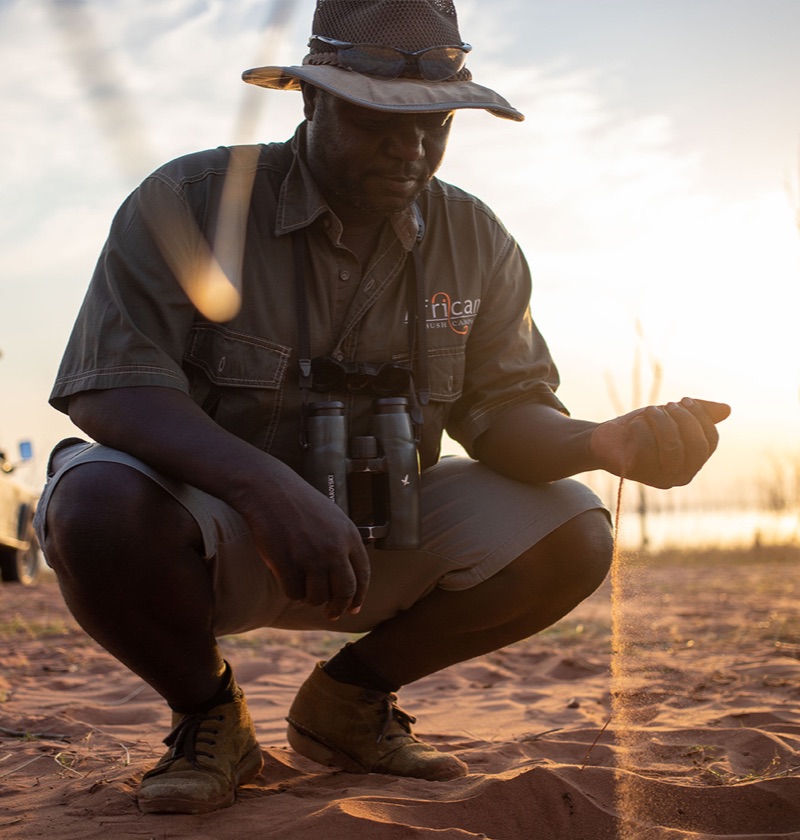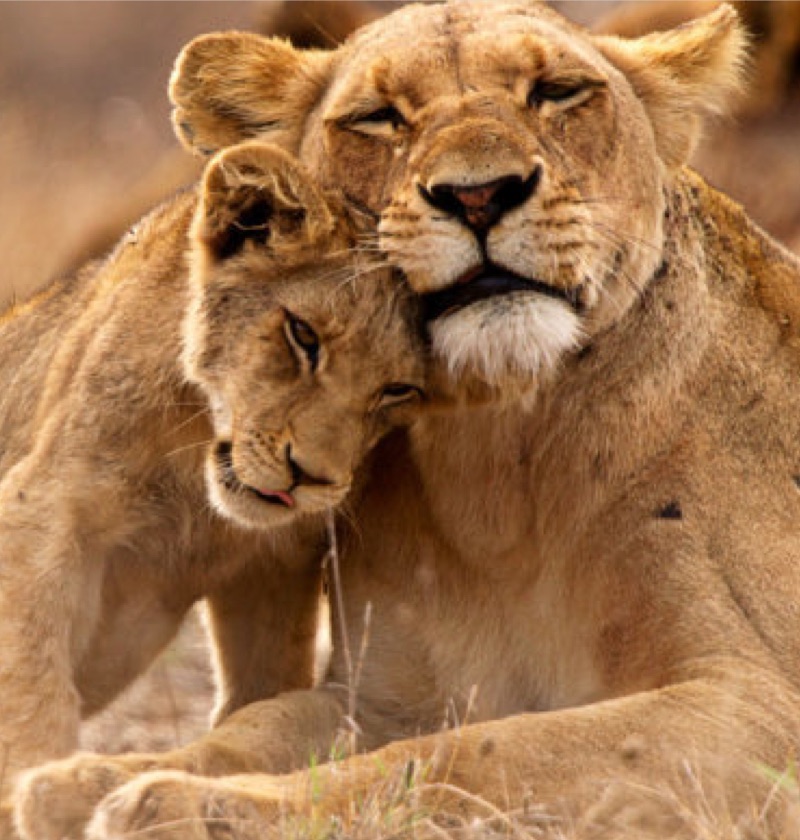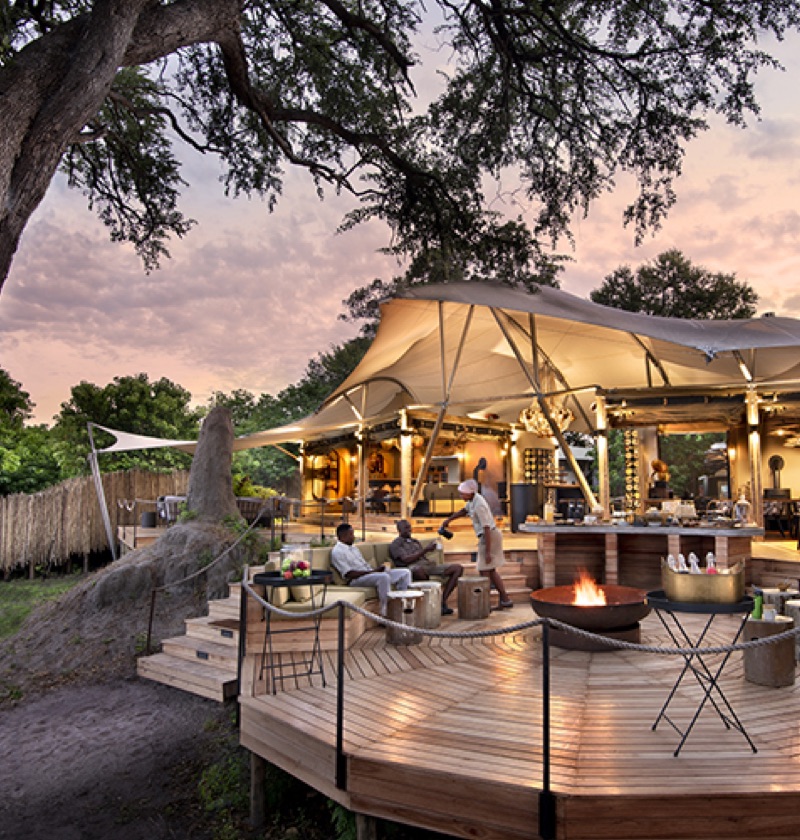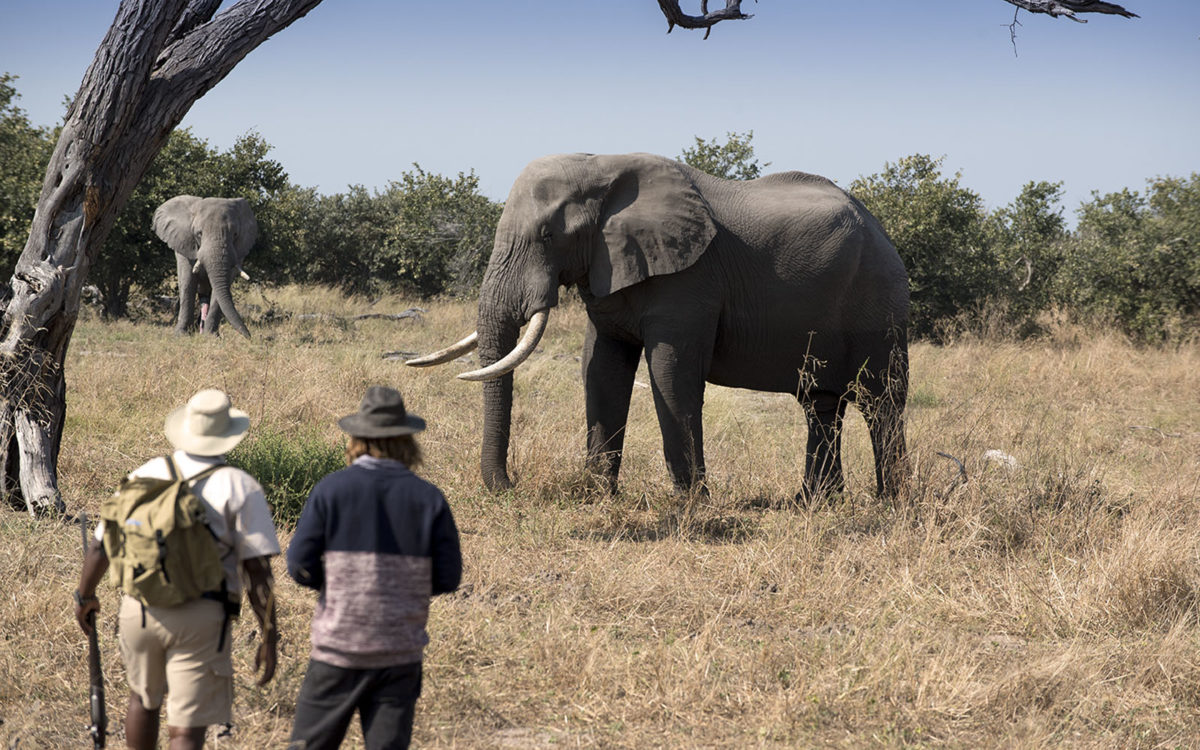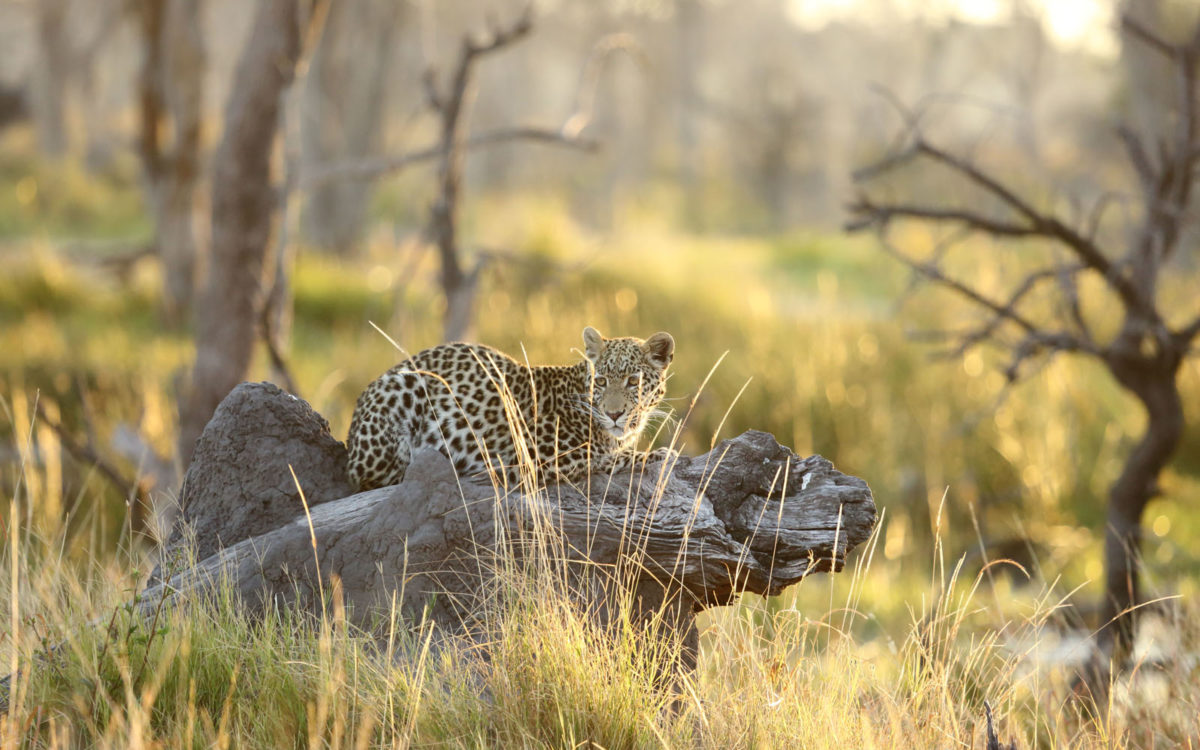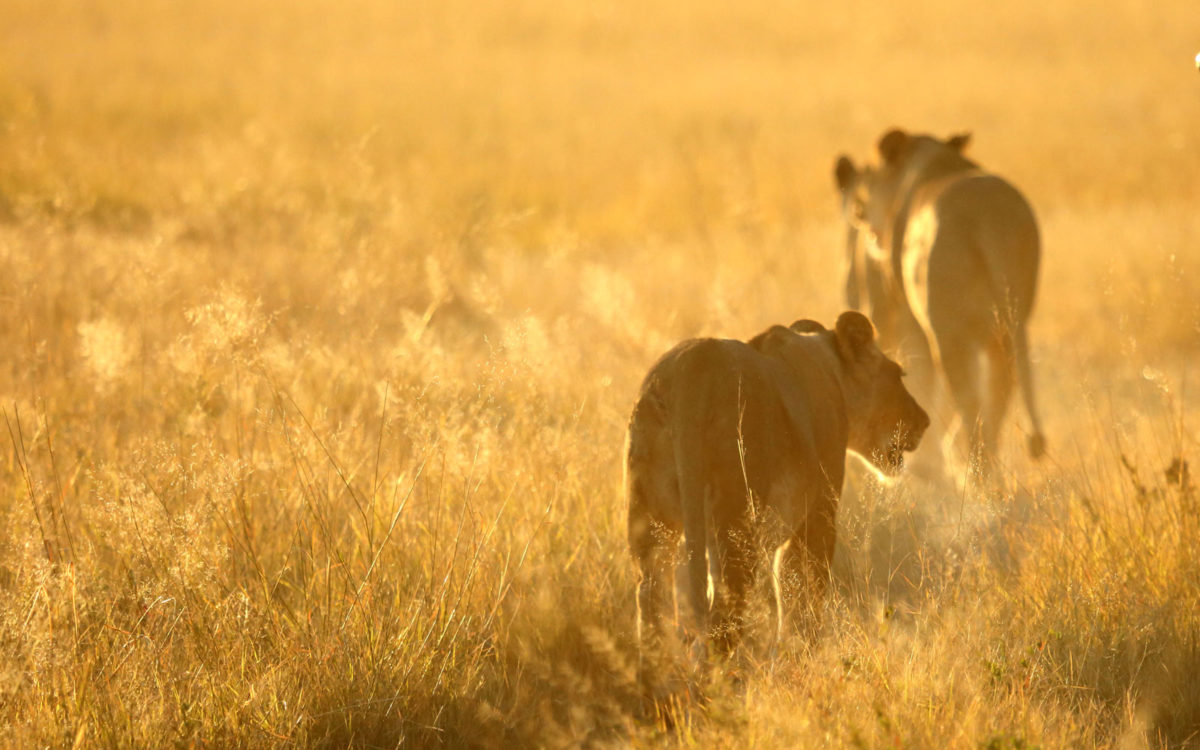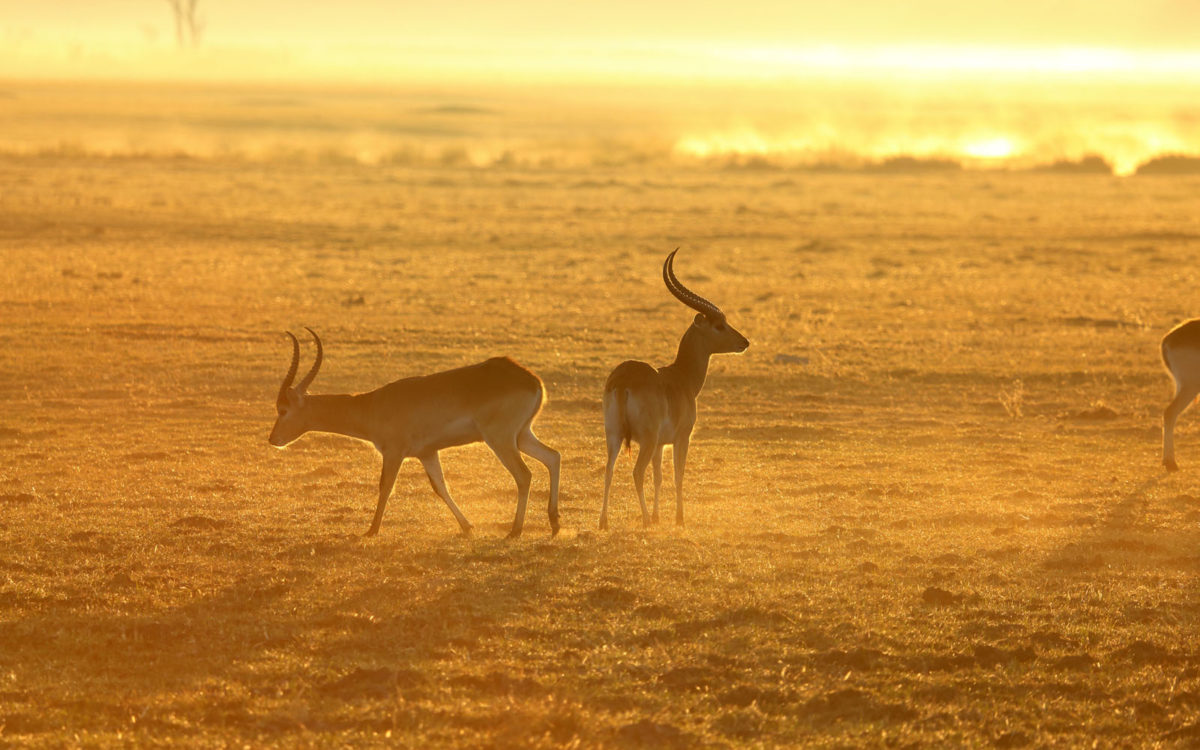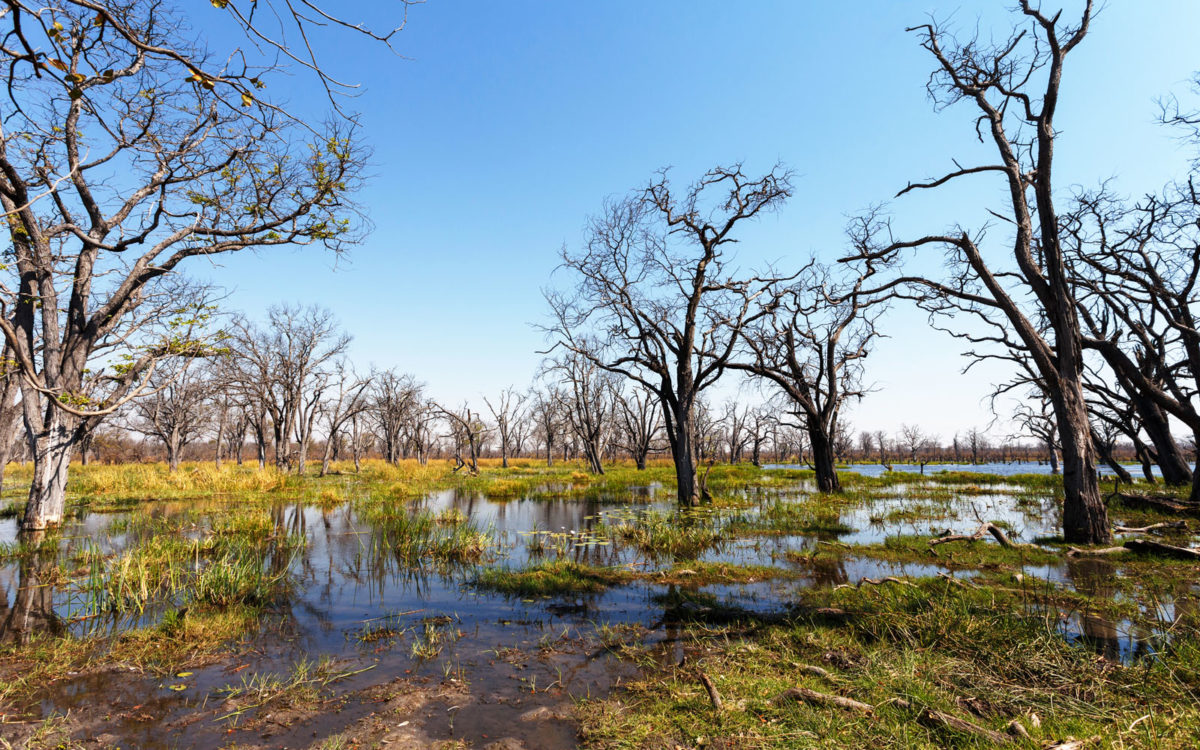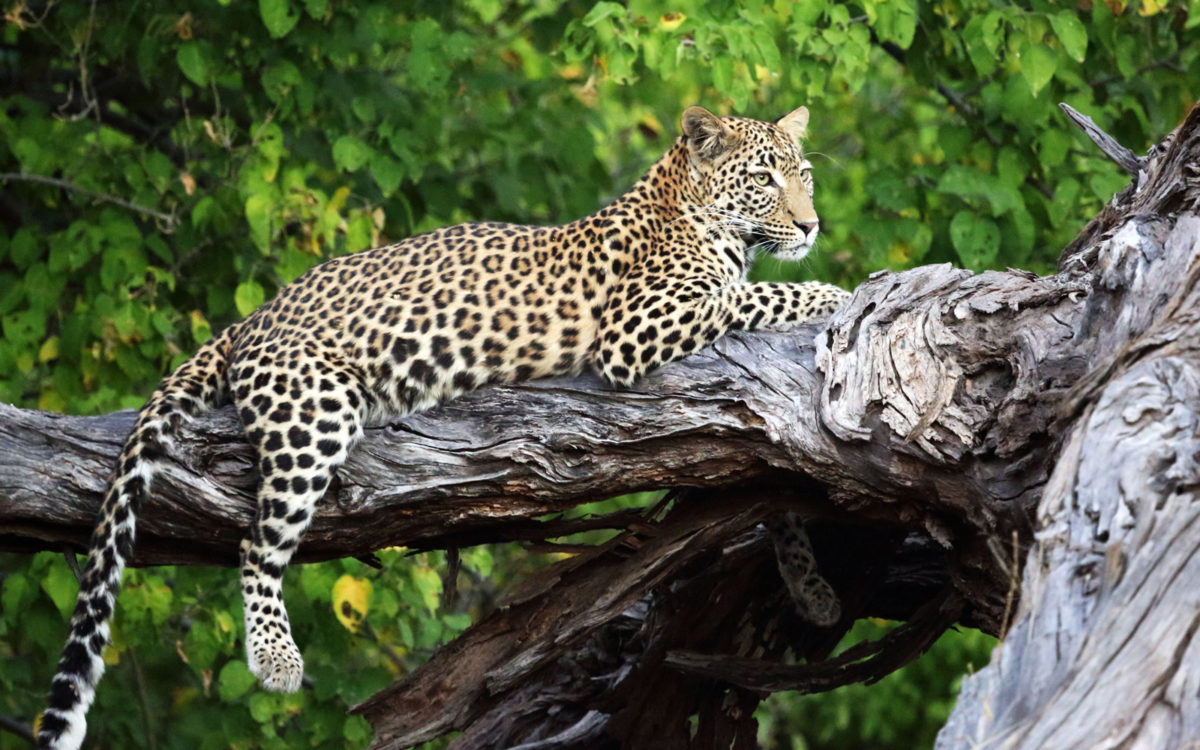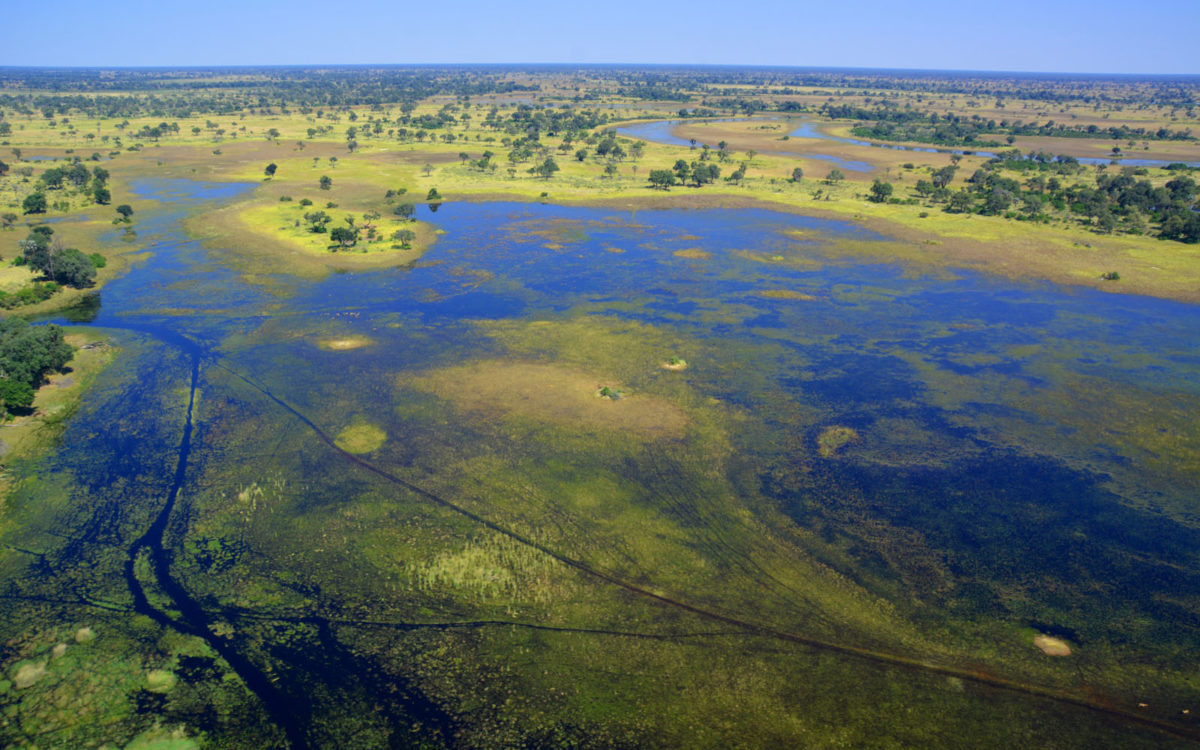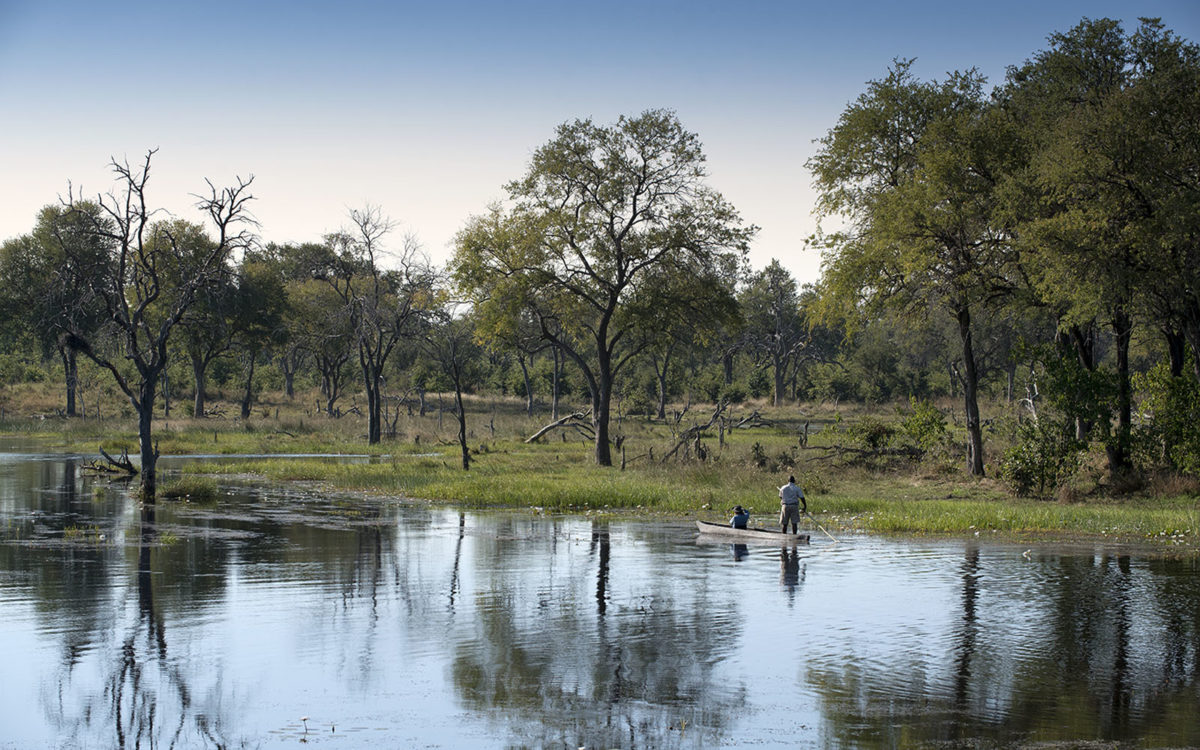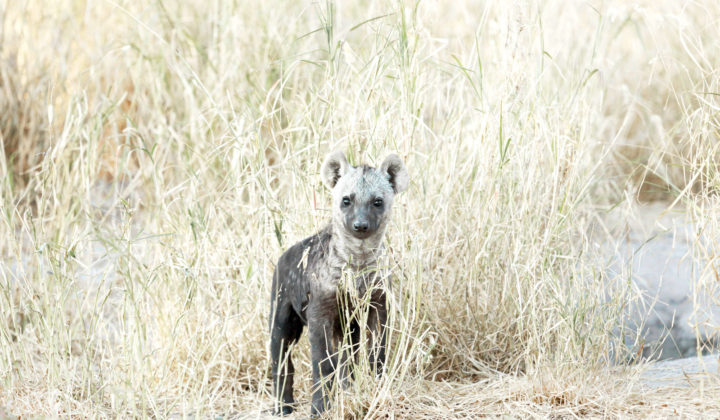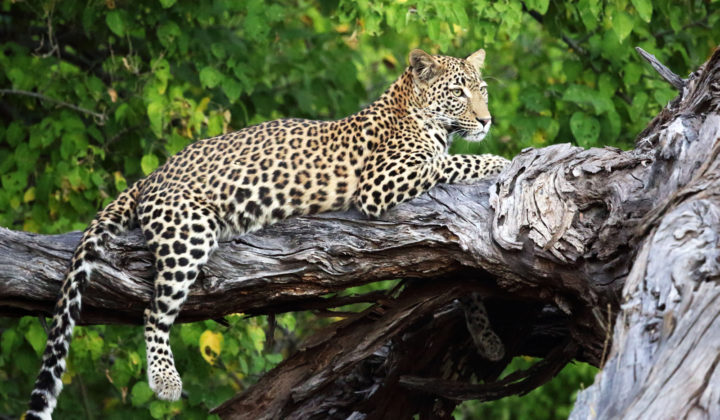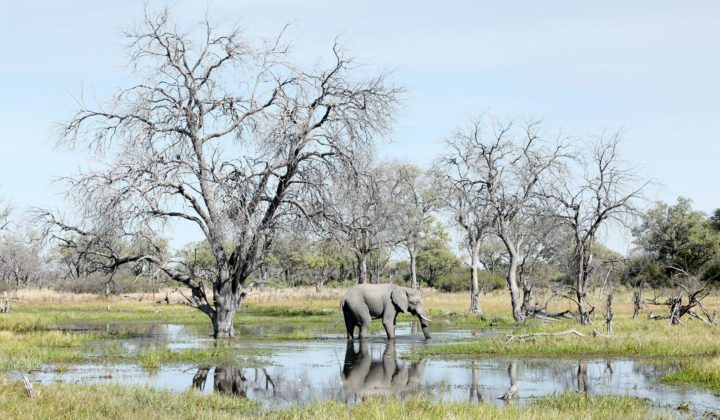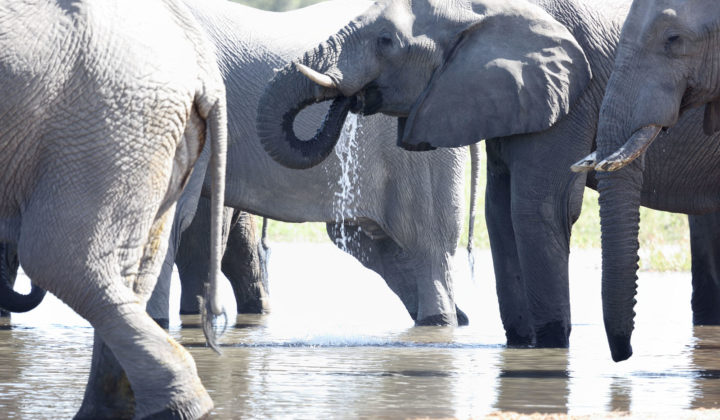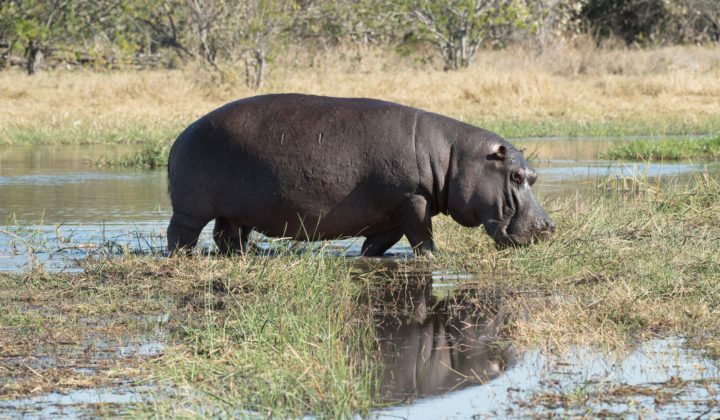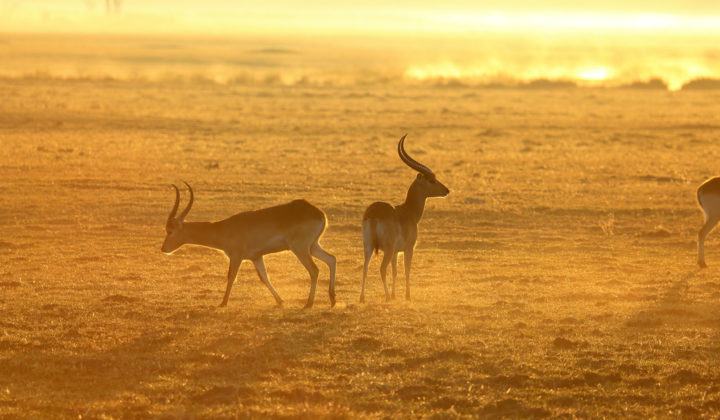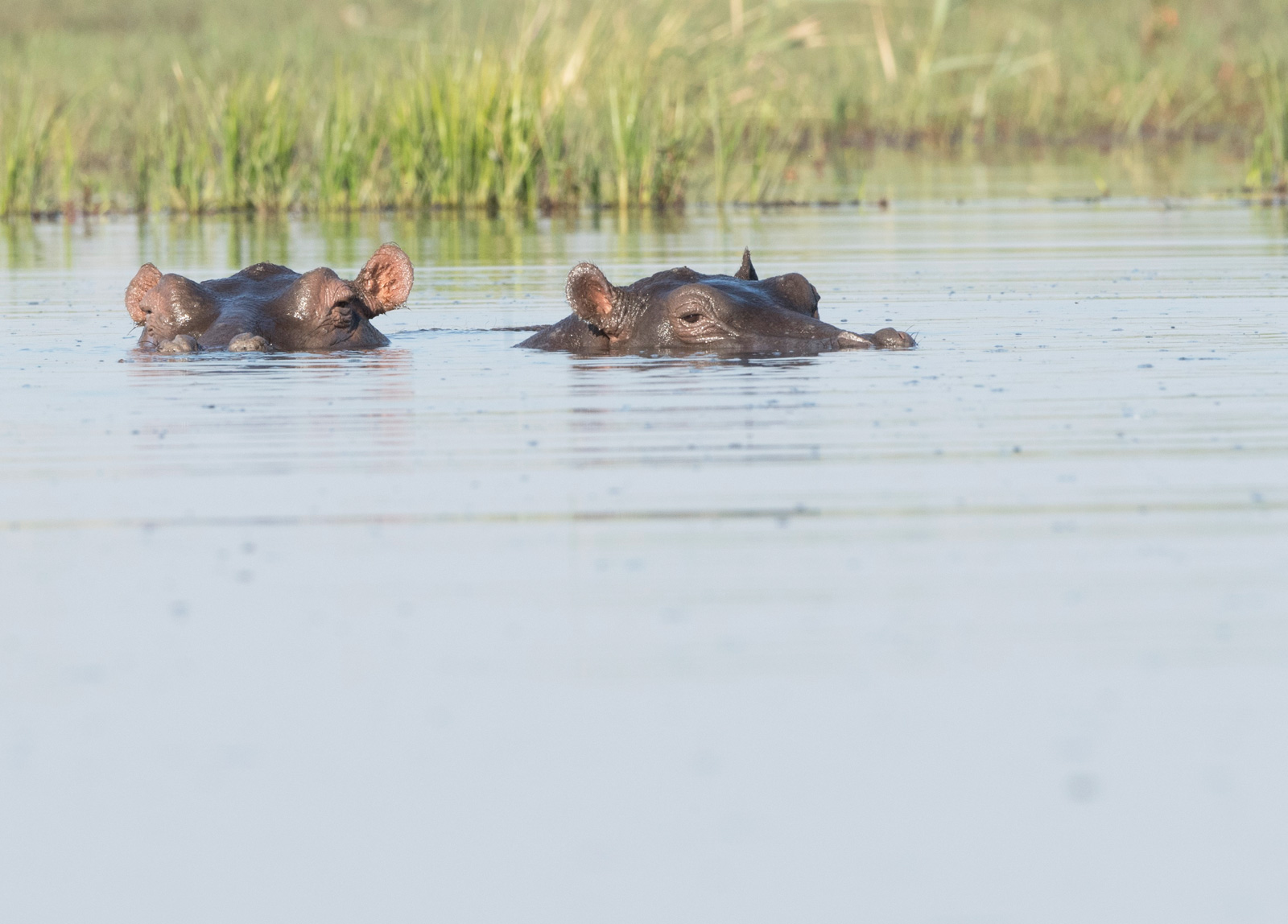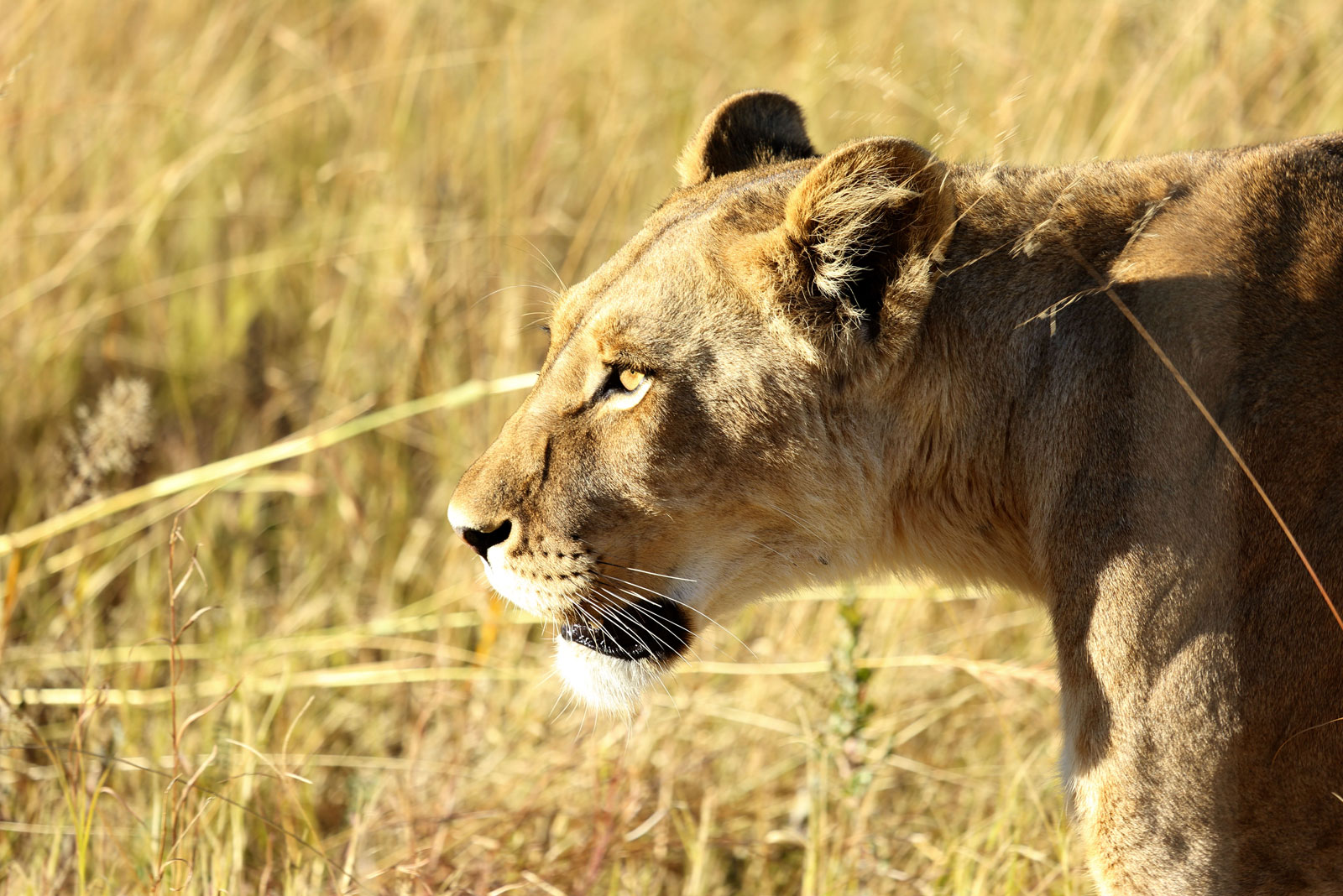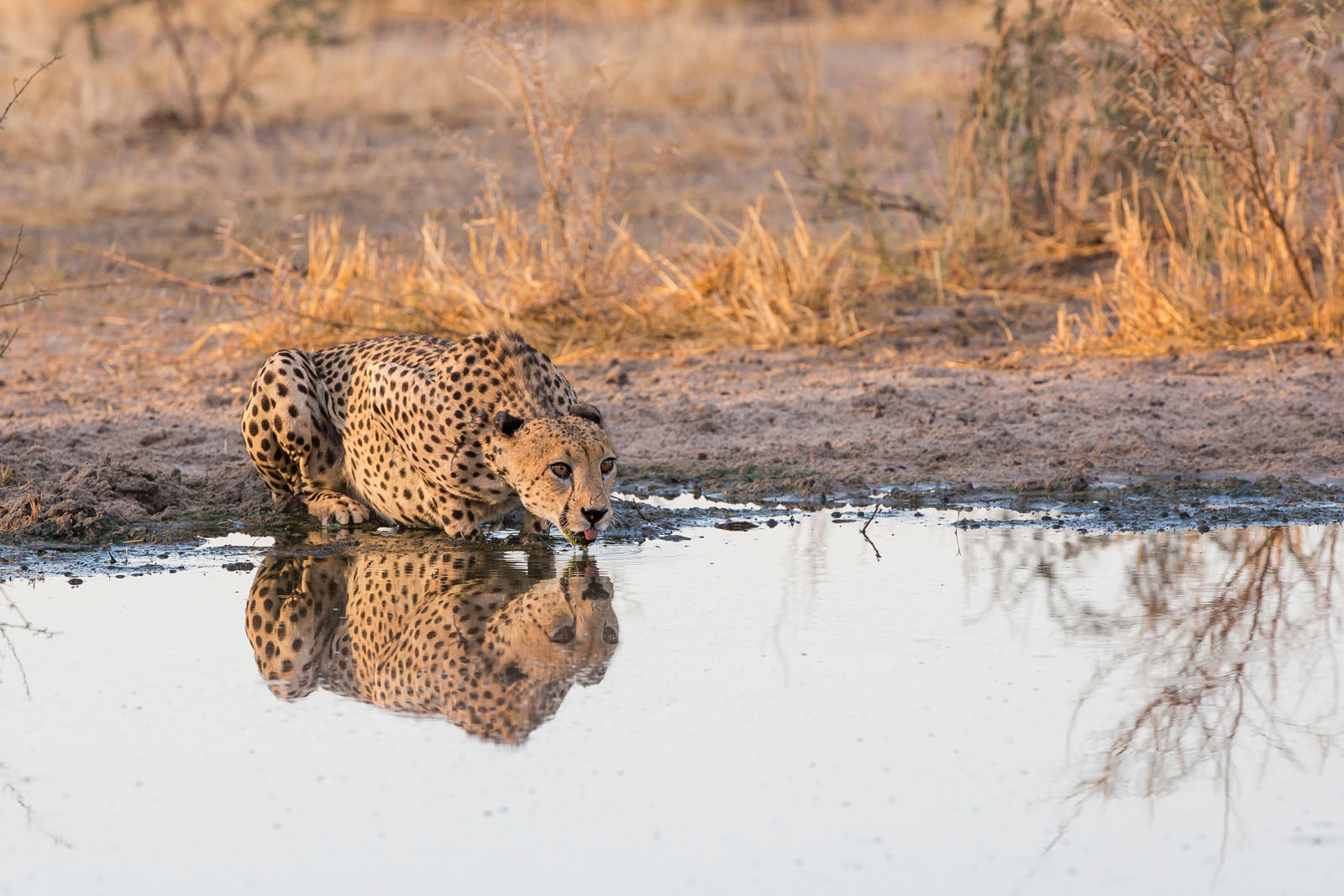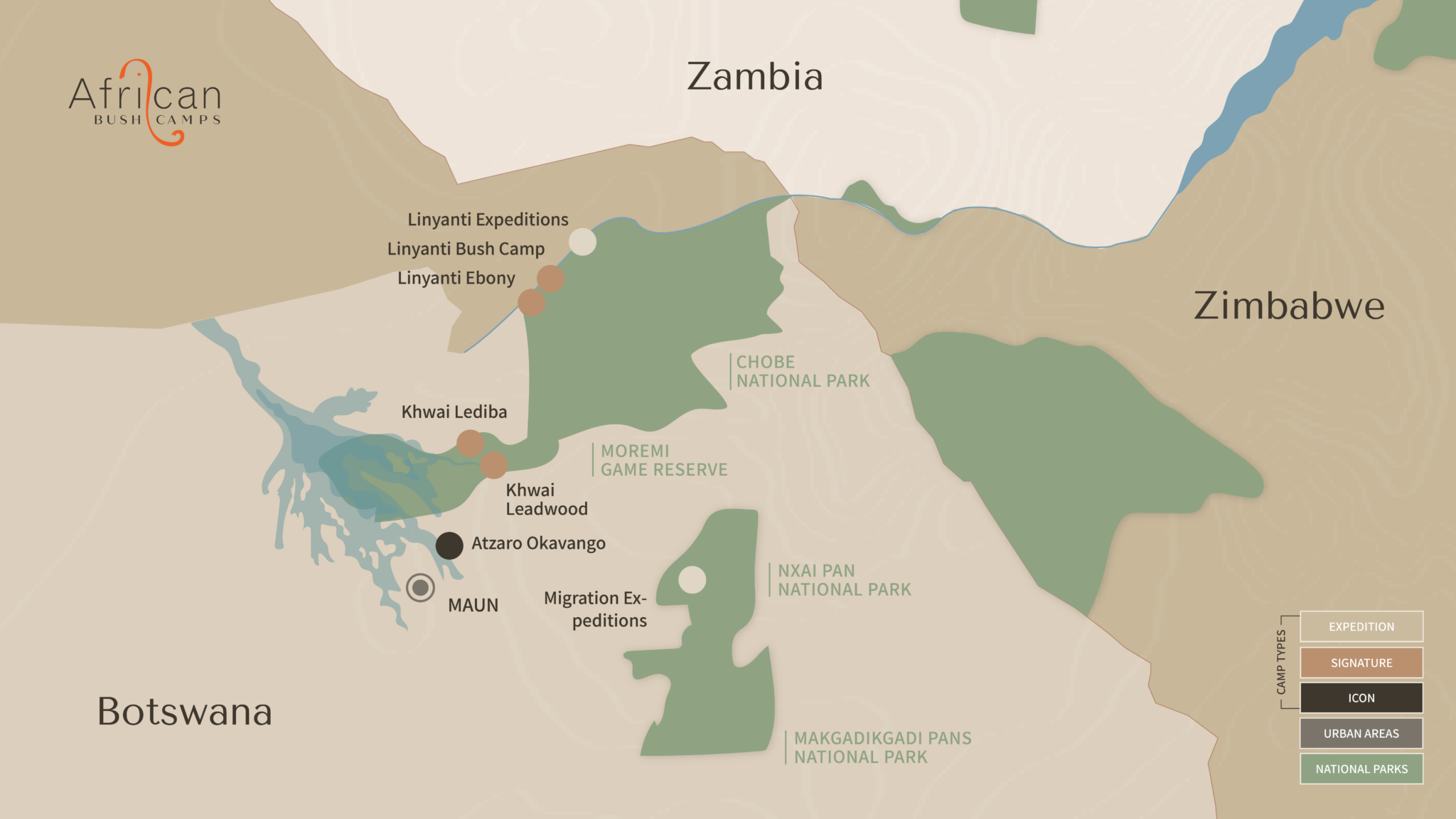One of the most beautiful tracts of wild land in Africa
Covering almost a third of the Okavango Delta’s north-eastern flank is the beautifully preserved Moremi Game Reserve. Named in honour of an important Batawana tribe chief, this unique and diverse ecosystem offers rare access to an extraordinary spectrum of animals year-round. Together with the Okavango Delta, this is one of the most beautiful tracts of wild land in Africa.
Made up of luscious landscapes, Moremi is a patchwork of lagoons, shallow flood pans and forest, providing outstanding game viewing activities whether on foot, in game vehicles or by boat. At its centre sits Xakanaxa Lagoon, a maze of deep water channels and mopane forests. Here sightings of the African wild dog and leopard are the norm along with antelope, lions, giraffe and elephants. Towards the northern tip around Khwai River floodplain, the rich landscape of leadwood and fig trees are somewhat a magnet for large herds of elephant and the area boasts an excellent density of both predator and prey. Bird enthusiasts will also be in awe, with over 400 species of birds including the African Fish Eagle, Sacred Ibis and Crested Crane.
Due to concerns around the rise of hunting in the Okavango Delta, Moremi was the first wildlife sanctuary to be declared by an African tribe in their own area in 1963. It has since been taken over by the Department of Wildlife and National Park and is run under strict guidelines to ensure the game is plentiful and safari vehicles are kept to a minimum. Moremi can either be accessed by light aircraft or by road via Maun.
Speak to one of our Senior Travel Advisors to plan your perfect Botswana Safari.


